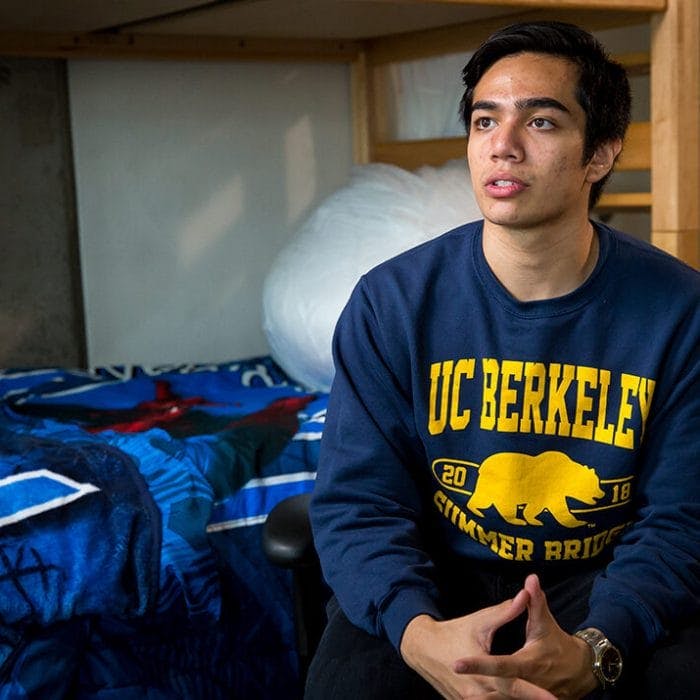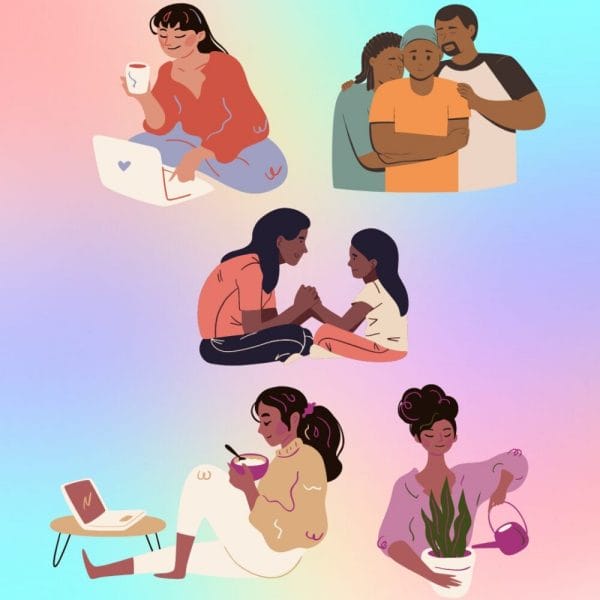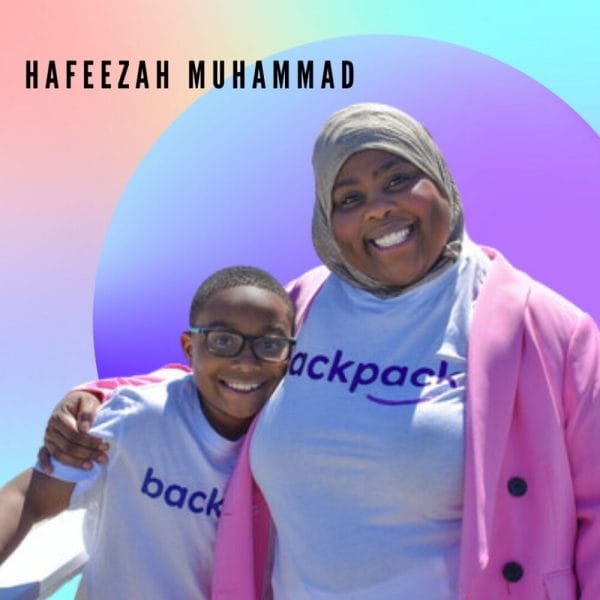This past week, Hopelab took to the not so small streets of UC Berkeley to engage with students about a few product concepts we’ve been developing for our project tackling loneliness in college-aged youth. Co-design is an essential part of every product we develop, and as we move into this phase of work, we wanted to make sure that we were on the right track. For a full day, we immersed ourselves in the college environment with two sets of student focus groups to discuss making new friends, their thought process when connecting with other people, and if and how they would/could use technology to improve the process. It was fascinating to hear what they had to say about these product concepts and the insights they had were beyond valuable. Here’s what we learned:
Teens know what they want and what they don’t:
At this point, this should be evident, especially in our past work with Well Being Trust and Vivibot. Some of these product concepts were met with notes of skepticism, and some were met with a flat out no. A huge factor in these “nos” had to do with the fact that students are running on what feels like borrowed time, so if it doesn’t interest them, they are not showing up for it. But for the products that were already meeting teens where they were- product concepts that could be hosted on existing sites like Facebook or Youtube seemed to be met with overall enthusiasm. Accessibility was a huge factor in getting students excited to “hypothetically” sign up or sign on to products that could be add-ons to apps they already host on their phones- like Google Calendar for example.
Let’s Normalize Asking For Help:
It’s pretty clear outside the world of college, asking for help has been stigmatized. And I think as a society we’re getting better about reversing that stigmatization, but we need to emphasize it tenfold on college campuses. Anytime the word therapy came up, it was met with a bit of hesitation. Students would say, “Well I don’t need therapy, but I would like someone to vent to.” Students don’t seem to understand that therapy is a beneficial tool for everyone- not just for people with “serious” problems. Venting is a term we heard a lot, and while therapy and venting aren’t interchangeable, they have plenty in common. If we can find a way to merge the two into a tech solution, where it feels comfortable and doesn’t feel taboo to use, we may have a real solution on our hands. While there was some differing opinion on whether or not this could be served up to students on a tech platform or in person, there was a clear interest in just having something or someone to talk to.
Whatever Product We Develop, It Needs To Be Relatable, Engaging, and Disguised:
We received feedback on every product concept we brought, but there was a consistent call for three major features- relatability, engagement, and covertness. We asked, “Where would you want this content to come from?”, or rather, who would really influence you to use these products, where would you want them coming from- a celebrity influencer? A fellow student? Who would get you to use the product? Someone relatable was the common denominator- more specifically someone who had once walked in there shoes. Upperclassmen, past graduates and alumni were all thrown into the equation, which makes sense; who better to tell you what to expect than the people that walked in your shoes? It was emphasized that it needs to be campus-specific, whatever we developed needs to directly relate to the population it is serving. Different campuses have different social norms, different programs, and different levels of social and public events, all of which should be factored into whatever product we create. Not only that, other students need to be using the product too. While this may seem obvious, it’s important to note, because whatever we develop is responsible for getting teens and young adults to be social. Many students noted that it needs to be engaging, humorous, and well produced, as well as popular. I guess certain things really are a popularity contest. Finally, and quite potentially most importantly, there needs to be an element of covertness. One student commented, “I don’t want to admit to being lonely, but I am, and I do want something to push me to take social risks”. Students don’t want to be reminded of their loneliness; it’s not fun to admit that you’re lonely, nor it is easy. You don’t want a technology solution to tell you “you’re lonely” either, you just want it to help you become less lonely.
Conclusions:
Since graduating a year ago, being on a college campus was an exciting venture into the past for me. But wow, let me say things are DIFFERENT now. Besides the fact that UC Berkeley is triple the size of my alma mater, what’s considered socially acceptable in terms of making and keeping social connections has changed. Students mentioned while it may not be hard to make a social connection on campus, it’s hard to maintain it. Some in my group commented- “even when I do reach out, and make a connection, I don’t really know what to do next. Or how or what contact information to ask for- its awkward.” I made the mistake of commenting- “Just ask for their phone number!”- which was met with blank stares. Apparently, asking and providing forms of getting in contact is a whole nother level of the interaction I never thought about. Asking for someone’s phone number is the last peg on everyone’s list, while Snapchat is more casual and friendly, Instagram is more formal- maybe if you’re interested in someone romantically, and Facebook is great for making a class friend. Everyone agreed Linkedin was purely for networking. Who knew things got so complicated over the last four years?! But even after getting contact information from potential friends, it’s the following up that gets people stuck- many brought up the issue of time, both theirs and their potential friends. Even if we get past that and into making plans, the goal is to show up, not get too nervous and hope that they don’t flake on you.
I will say though since graduating, some things are still the SAME. Like always cashing in on free food and this looming fear of rejection or failure. Social risks aren’t taken because students are scared to fail or that people won’t want to connect with them back. It was noted in many different groups that if there was an element of “how to” or tutorial-esque material, students would be signing on immediately. I’m not sure if that’s a Gen-Z specific thing, but it seems like there was a strong desire to know what is coming next- whether that’s following up with a new friend you made at a football game or trying to get involved with a club on campus. Very interesting, but slightly frightening to me at the same time. At 23, I am still terrified of making the spontaneous connection- I get it. But I also understand that in order for you to grow socially ( or in any outlet of your life) you have to try and trying means potentially failing. There is a major juxtaposition of wanting to know the easiest way to make and maintain strong healthy friendships, and understanding that there is no “how-to” video or data piece when it comes to pushing yourself to take social risks. Look if I could follow a how-to video about everything in my life, I would probably do it. But that doesn’t mean I would necessarily be doing it the best way, or authentically living my truth. While “How To’s” can be helpful, they can also inhibit our ability to think creatively, find solutions that actually work for us personally, and in this case build relationships. Higher education is a breeding ground for elevated thought but also immense amounts of pressure- like failing academically or what’s sometimes even more detrimental, thinking you failed socially. Whatever product we decide to build out, it is clear that there are plenty of norms that we need to dispell first. We know that teens and young adults are lonely and looking for a connection, but we also know they have a fear of failure and rejection that is keeping them from connecting. I am excited to see where these product development sessions take us next, with this generation it seems like anything is possible.




